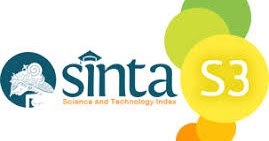Analysis of Islamic Economic on Production Management of Home Industry Farmers Group Ambudi Makmur 2 Kramat Bangkalan
DOI:
https://doi.org/10.35309/alinsyiroh.v7i2.201Abstract
The background of this study is because of the number of Salak fruits in wrong treatment so that the group of farmers work together to make the fruits into several processed products.  Home industy of farmers group Ambudi Makmur 2 Kramat Bangkalan is one of home industries in Bangkalan district; this company is engaged in the production and processing of salak. The company has 13 products from the processed salak good management is needed to make the production activities run optimally. Besides, it is also supported by the alignment of production factors so that the production activities are in accordance with the targets of expectation. Because it affects the income and progress of the company, this type of the study is included in field research. To obtain the data in this study, the present study used interview, observation and documentation. Meanwhile, in analyzing the data, this study used qualitative approach such as describing the object according to the actual fenomena. Based on the results of the research that the home industry or Unit Dagang (UD), Budy Jaya has carried out production management properly and does not against the Islamic economic principles, where in production activities uses clean and halal raw materials and equipments. This is done to provide the best hospitality for the benefit of the people. Keywords: Management, production, processed salak, Islamic Economy.
Downloads
Downloads
Published
How to Cite
Issue
Section
License
Copyright (c) 2024 Al-Insyiroh: Jurnal Studi Keislaman
This work is licensed under a Creative Commons Attribution-ShareAlike 4.0 International License.







